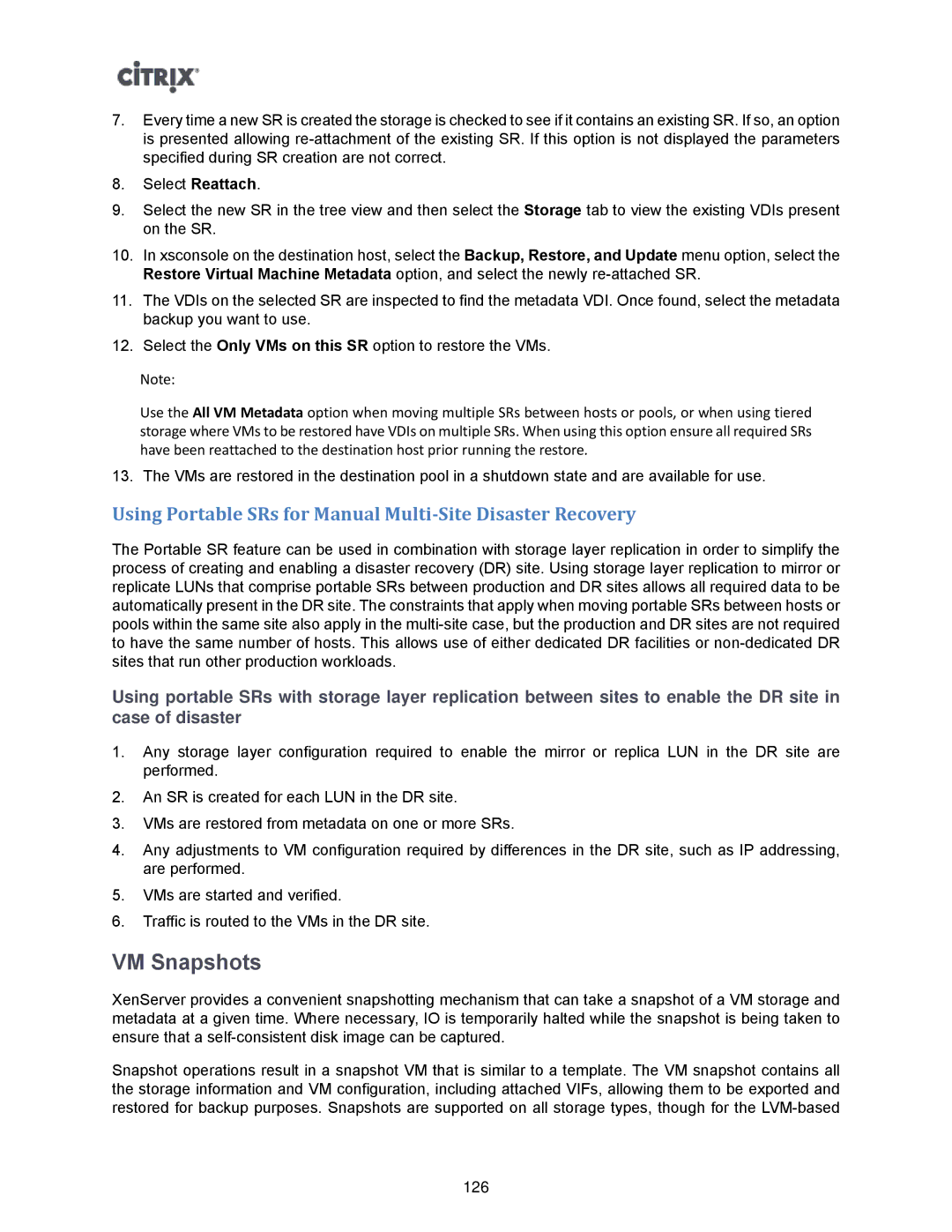7.Every time a new SR is created the storage is checked to see if it contains an existing SR. If so, an option is presented allowing
8.Select Reattach.
9.Select the new SR in the tree view and then select the Storage tab to view the existing VDIs present on the SR.
10.In xsconsole on the destination host, select the Backup, Restore, and Update menu option, select the Restore Virtual Machine Metadata option, and select the newly
11.The VDIs on the selected SR are inspected to find the metadata VDI. Once found, select the metadata backup you want to use.
12.Select the Only VMs on this SR option to restore the VMs.
Note:
Use the All VM Metadata option when moving multiple SRs between hosts or pools, or when using tiered storage where VMs to be restored have VDIs on multiple SRs. When using this option ensure all required SRs have been reattached to the destination host prior running the restore.
13. The VMs are restored in the destination pool in a shutdown state and are available for use.
Using Portable SRs for Manual Multi-Site Disaster Recovery
The Portable SR feature can be used in combination with storage layer replication in order to simplify the process of creating and enabling a disaster recovery (DR) site. Using storage layer replication to mirror or replicate LUNs that comprise portable SRs between production and DR sites allows all required data to be automatically present in the DR site. The constraints that apply when moving portable SRs between hosts or pools within the same site also apply in the
Using portable SRs with storage layer replication between sites to enable the DR site in case of disaster
1.Any storage layer configuration required to enable the mirror or replica LUN in the DR site are performed.
2.An SR is created for each LUN in the DR site.
3.VMs are restored from metadata on one or more SRs.
4.Any adjustments to VM configuration required by differences in the DR site, such as IP addressing, are performed.
5.VMs are started and verified.
6.Traffic is routed to the VMs in the DR site.
VM Snapshots
XenServer provides a convenient snapshotting mechanism that can take a snapshot of a VM storage and metadata at a given time. Where necessary, IO is temporarily halted while the snapshot is being taken to ensure that a
Snapshot operations result in a snapshot VM that is similar to a template. The VM snapshot contains all the storage information and VM configuration, including attached VIFs, allowing them to be exported and restored for backup purposes. Snapshots are supported on all storage types, though for the
126
